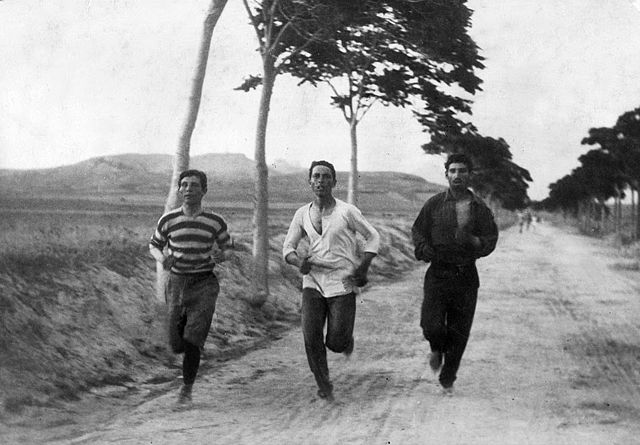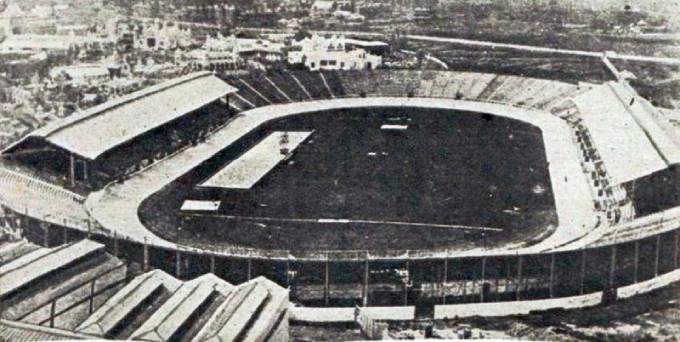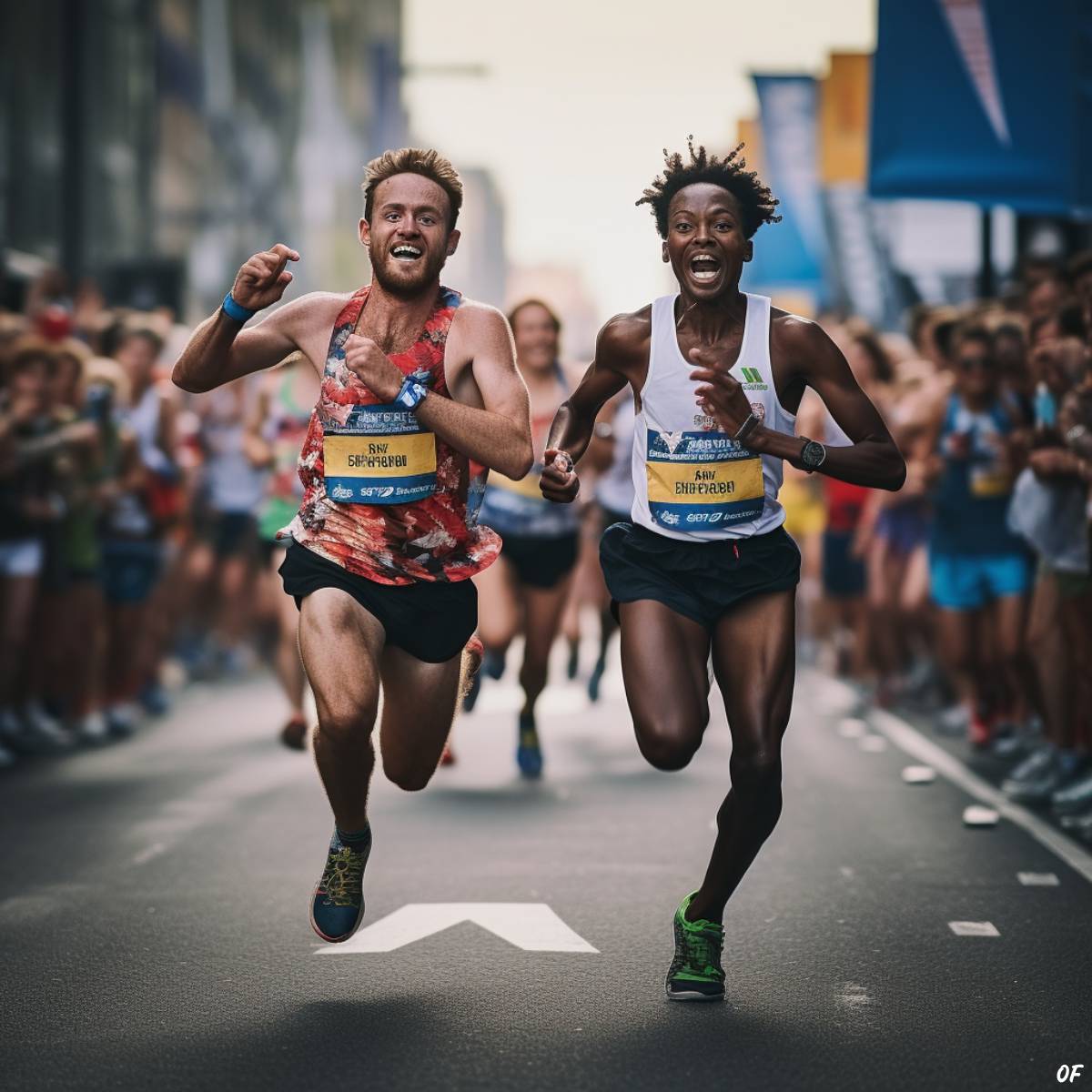So, how long is a marathon? A standard marathon length is 26.2 miles or 42.2 kilometers. It is natural to assume that this length is based on the distance run by the legendary Philippides between Marathon and Athens in 490 BC. He was bringing news to the Athenians: victory at the Battle of Marathon. Unfortunately, the effort was too great, and he died after announcing the triumph.
Historians believe that Philippides’ route—the first marathon—was somewhere between 35 to 40 kilometers, depending on the route taken. When the modern Olympic Games began in 1896, the marathon was identified as an iconic Games symbol. The modern Olympic Games were reborn in Athens and are a proud reminder of Ancient Greek history.
Both the Games and the race caught the world’s attention, and the modern marathon soon became an annual fixture in cities and countries globally, starting with Boston. But even as this classical race exploded in popularity, the exact value of the marathon distance remained up in the air. Read on to discover how this hallmark of endurance was shaped by modern invention more than an ancient legend.

Marathon runners take up the call
Boston, the world’s oldest annual marathon, kicked off in 1897 due to the enthusiasm for the first Olympic marathon in 1896.
The concept captured the hearts and minds of Americans. Cities across the US launched marathons of their own. New York, in particular, launched the New York City Marathon and held five marathons in 1909 on holidays such as Thanksgiving Day. Not all the races were full marathons; some covered shorter distances, like the Big Sur race. People in other countries, from England to Korea and Tokyo, took up running. Today, there are about 800 marathons run per year. Some are so popular that entry is by ballot. As many as 20,000 entrants compete in the more iconic races, like the Boston Marathon.
Read more: The Unbelievable Ridiculousness of the 1904 Olympic Marathon
Until 1921, the length of a marathon was not standardized, but it was usually around 25 miles long. The standard distance of 26.2 miles was finally declared in 1921, based on somewhat eccentric criteria.
Ambiguity behind an international standard
So, how did the length of a marathon come to be 26.2 miles? Some blame the British royal family. However, the true origins remain unclear. Even experts can’t agree.
The London Marathon was inaugurated in 1908 as part of the 1908 London Olympics. In one version of the story, we have Queen Alexandra desperate for her children to get a first-class view of the start of the race from their nursery windows. The easy solution? Start it on the private East Lawn of Windsor Castle. The marathon race finished in front of the Royal Box at the White City Stadium. The distance from start to finish was 26 miles and 385 yards, in accord with the queen’s wishes.

Some historians disagree, citing no evidence. The peculiar distance has also been attributed to a change in the 1908 stadium entrance for finishing marathon runners. This new arrangement resulted in competitors running 385 yards clockwise around a portion of the stadium track instead of a full track lap. You can still blame the royal family, though—the alternative race entrance was needed to accommodate royal carriages.
We’ll probably never know the definitive version of events.
In 1921, the International Amateur Athletic Federation adopted the length of the London Olympic Marathon as the official distance for all future marathons, namely 26.2 miles or 42.2 kilometers, the distance from Windsor Castle to White City Stadium.
A men-only club
Women running in marathons started much earlier than you might think; there was a female runner in the 1896 Olympic Games marathon. However, she was not allowed official entry and was barred from entering the Olympic Stadium. Down the years, women did compete but were always unofficial and unrecognized. Then, in 1967, the efforts to bar women caused a national outrage.
Women finally get a shot
The Boston Marathon had become an iconic event over the years but excluded women. One woman who decided that she would run the Boston unofficially in 1966 was Bobbi Gibb. When she entered officially, her entry was rejected. The Race Director, Will Cloney, claimed that it was physiologically impossible for women to run 26 miles. Gibb snuck in and completed the course in under 3 1/2 hours. The big drama happened in 1967 when Kathrine Switzer entered as K.V. Switzer, and her entry was accepted. A photo of officials trying to drag her off the course caused a turning point in US women’s athletics, although it did not happen until 1971. Ironically Bobbi Gibb was running again, but she got forced off at the finish. Her time was an hour faster than Switzer’s. It took till 1995 for Gibb to be recognized as the women’s winner in 1966, 1967, and 1968.
In Europe, women fared slightly better in shorter races, with the Women’s World Games being held in Paris in 1922 and Violet Piercy completing a marathon between Windsor and London unofficially in 1926. When we see women running marathons today, we should celebrate these pioneers.
A challenge for the differently abled
Marathons allow many people who are suffering from a disability to challenge themselves and compete with other athletes. Visually impaired runners can run in tandem with a sighted runner; amputees can race with artificial limbs that replace legs with bionic technology; paraplegic and even quadriplegic athletes can compete in wheelchair marathons. While, initially, there were few opportunities, there was always some competition, even as far back as the 1880s. The recognition of how vital sport could be for injured veterans from World War II started the movement, which grew until 1960, when the first Paralympic Games were held in Rome. The recent Tokyo Games included three men’s and two women’s marathons for different classes of disabilities, with participants from across the globe.
Read more: George Eyser: Swept the 1904 Olympics And Then Disappeared
The rise of the half-marathon
After your first five or 10-km run, the thought of running 42.2 km can be pretty daunting, which is where the half-marathon comes in. At 21 km (no bothersome fractions), it is not for novices but does not tax the body as much. Most standard marathons include a half-marathon these days and a 10 km and a 5km “fun” run, although there are some races that exist on their own as a half-marathon.
The Skukuza half-marathon takes place in the Kruger National Park in South Africa, and every effort is taken to ensure that runners do not clash with elephants, rhinos, or lions. Then there is the challenging and scenic Great Wall run, which includes 5,164 steps, stunning scenery, and a glimpse of rural villages.
The ultra-marathon, for the truly crazy
There is always the ultra-marathon for those of us who do not find a standard marathon terrible enough.
There is no fixed distance for an ultra-marathon; some are 50-60 km long, while others offer over 300 km for a thrill-seeking marathon runner. Two notable long-distance races include the “La Ultra,” a daunting 333 km run in the Himalayas at altitude, and the Yukon Montane Arctic Ultra.
Running during the pandemic
Covid-19 put a stranglehold on marathon running, and even the Olympic Games, but creative and frustrated runners created the virtual marathon. While nothing can compare with the real thing, the image of running either an established marathon or a fantasy marathon—like a run from Land’s End to John o’Groats—did provide a distraction.
Who are the best runners?
Runners from East Africa dominate the marathon podiums, especially those from Kenya and Ethiopia. There are several reasons for this, starting with their lean build; their diet is low-fat and high in plant protein. Another factor is high altitude: Kenya’s average elevation is 2,500 feet (762 m), while Ethiopia has even higher terrain. The body adapts to lower oxygen levels with a higher red blood cell count and increased lung capacity. Running is also a way of life, starting at an early age, with running long distances to and from school or to pastures to look after livestock, the most accessible and cheapest way of getting around. This is why the world records are all held by Kenyans, who crash time barriers with seemingly unbeatable finishing times.
The current men’s world record is held by Eliud Kipchoge of Kenya, clocking the finishing time of 2:01:39 at the Berlin Marathon in 2018.
The women’s world record is split between a women’s race and a mixed-gender race: Mary Ketani of Kenya had a finishing time of 2:17:01 at the London Women’s Marathon in 2017, while another Kenyan, Brigid Kosgei, set a blistering pace of 2:14:04 at the Chicago Marathon in 2019.
Are you feeling inspired?
Running a marathon is not an impulse decision. Marathon training is itself an ordeal—you need to work your way up from 5 and 10-km races to half-marathon races. Then, if you feel that the longer distance is for you, you can do your own 26.2 miles. Most marathons nowadays are so popular that they have to limit the number of entries. But enter timeously, get that rush of waiting in anticipation at the starting line, enjoy the lines of people cheering you the entire distance, and, when you have crossed the finishing line, you have something no one can take away from you.


